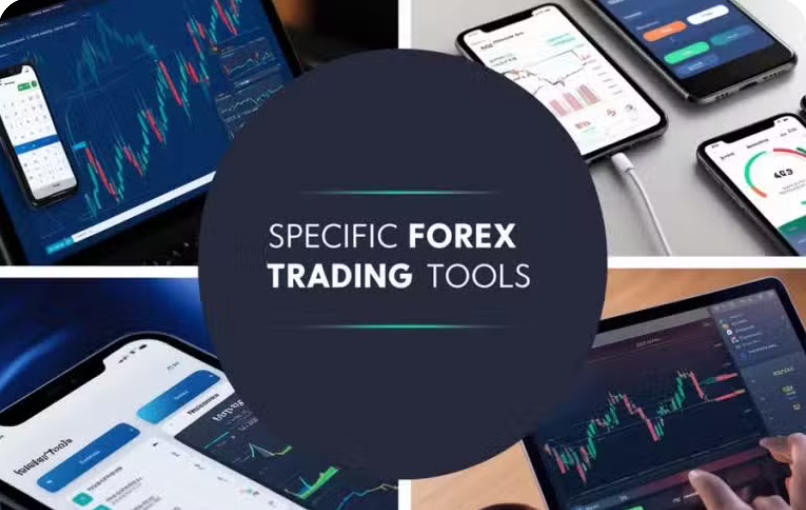What You Need to Start Trading Forex (Tools + Accounts)
The foreign exchange (forex) market is the largest and most liquid financial market in the world, with trillions of dollars traded daily. Thanks to technology, anyone with a computer or smartphone and an internet connection can now access the market. But before you place your first trade, it’s important to set yourself up with the right tools and accounts. This blog post breaks down what you need to start trading forex, whether you’re a total beginner or brushing up your checklist.
1. A Reliable Device + Stable Internet Connection
Your first tools are basic but critical: a laptop, desktop computer, or smartphone — and a stable internet connection.
-
A desktop or laptop is recommended for full access to trading platforms, charts, and analysis tools.
-
A smartphone or tablet is helpful for monitoring trades on the go.
Also, ensure your internet connection is stable and fast to avoid slippage or order delays.
2. A Trusted Forex Broker
To trade forex, you need access to the interbank market and that’s where a broker comes in. They serve as your bridge to the global forex market.
When choosing a broker, look for:
-
Regulation by a recognized authority (e.g., FCA, ASIC, CySEC)
-
Low spreads and transparent fees
-
Good reviews and a solid reputation
-
Local deposit and withdrawal options (especially important if you’re in Nigeria or other emerging markets)
Once chosen, you’ll open a trading account more on that below.
3. A Forex Trading Account
Most brokers offer several types of accounts:
-
Demo Account: Practice with virtual funds before risking real money
-
Micro or Cent Account: Trade small positions with low capital
-
Standard Account: For larger trades and experienced traders
-
ECN or Raw Spread Account: Direct market access with low spreads and commission-based pricing
Choose an account that suits your experience and budget. Many brokers allow you to start with as little as $10–$100.
4. A Trading Platform (Like MetaTrader 4/5)
This is your trading dashboard where you analyze price charts, place orders, and manage trades.
Popular platforms include:
-
MetaTrader 4 (MT4): Ideal for beginners; simple, lightweight, and widely supported
-
MetaTrader 5 (MT5): More advanced tools and indicators, supports more assets
-
cTrader: A sleek and modern platform with depth-of-market features
Most brokers offer these platforms for desktop, mobile, and web. Try out the demo version first to get familiar.
5. Charting and Analysis Tools
Technical analysis is key in forex. You’ll need:
-
Real-time price charts
-
Technical indicators (e.g., moving averages, RSI, MACD)
-
Drawing tools (trendlines, Fibonacci levels)
These tools are usually built into your trading platform, but you can also use third-party platforms like TradingView for enhanced visuals and community ideas.
6. Forex Education and Strategy
Before trading live, invest in your education. Learn about:
-
Currency pairs and how they work (e.g., EUR/USD, GBP/JPY)
-
Pips, lots, and leverage
-
Risk management
-
Technical and fundamental analysis
Free resources:
-
Broker education hubs
-
YouTube tutorials
-
Forex blogs and forums
-
Online courses (both free and paid)
Also, develop a trading plan or strategy don’t rely on luck or signals alone.
7. Risk Management Tools
Protecting your capital is just as important as making profits. Key tools include:
-
Stop-loss orders: Automatically close a losing trade at a set level
-
Take-profit orders: Lock in profit once a trade reaches your target
-
Position size calculators: To calculate the correct trade size based on your risk tolerance
Never trade without a plan and never risk more than 1–2% of your account per trade.
8. Payment Method for Deposits & Withdrawals
To fund your trading account, you’ll need a payment method. Common options include:
-
Bank transfer
-
Debit/credit cards
-
E-wallets (Skrill, Neteller, PayPal)
-
Local payment processors (e.g., Paystack, Flutterwave for Nigerian users)
-
Cryptocurrencies (in some cases)
Make sure your broker supports fast and secure withdrawals.
✅ Final Checklist: What You Need to Start Trading Forex
✔ A reliable computer or smartphone
✔ A strong internet connection
✔ A regulated forex broker
✔ A trading account (demo or live)
✔ A trading platform (MT4/MT5/cTrader)
✔ Charting and analysis tools
✔ Education resources and a trading strategy
✔ Risk management tools
✔ Deposit/withdrawal method
Final Thoughts
Forex trading can be exciting and profitable but only if you’re properly prepared. Getting the right tools and accounts in place sets the foundation for long-term success. Start slow, learn consistently, and always manage your risk.
Want help picking the best broker or setting up your platform? Drop a comment or message I’m happy to guide you step-by-step.


